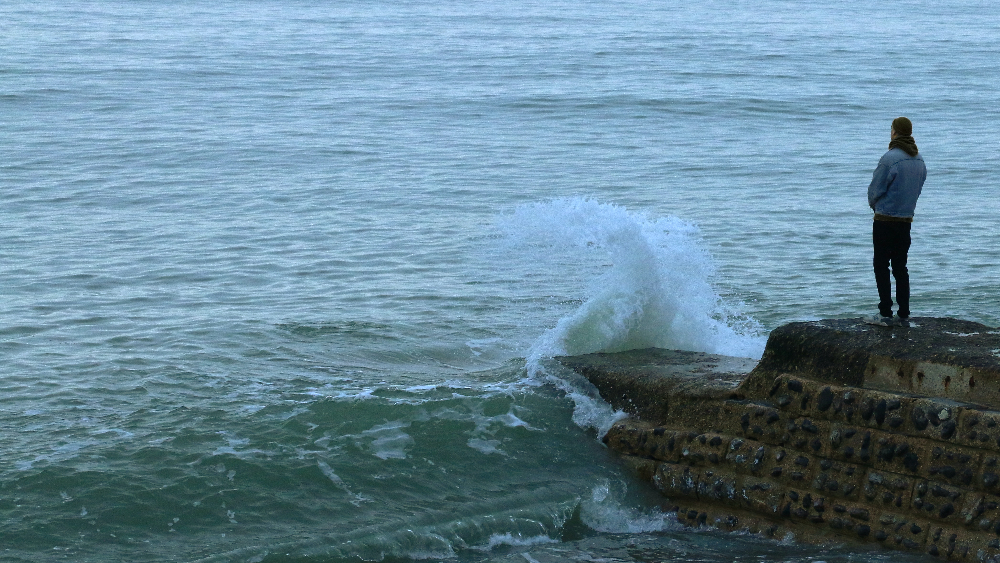Ketamine vs. MDMA for PTSD: Which One Works Best?
People suffering from PTSD have more options than ever. And now two treatment options — ketamine vs MDMA — have emerged to help those who suffer.
Interested in Ketamine Therapy? Find Ketamine Treatment Near You
There are times in most people’s lives when they have overwhelming experiences that leave them with an imprint that disconnects them. The lingering of symptoms and capacity for resilience varies from person to person and situation to situation. From my perspective, PTSD is better understood as a spectrum than a binary.
While traditional therapies offer relief to many, there remains a significant group for whom these methods fall short. This is where two intriguing alternatives, ketamine and MDMA –- usually paired with therapy -– come into the picture, offering new hope for those wrestling with PTSD.
Interested in MDMA Treatment? The FDA is close to approving MDMA Therapy. Get on the waiting list now!
My Experiences – A Tale of Two Therapies
Though we can speak to the broader trends and general patterns observed in the use of these two substances, it’s essential to remember that the healing journey is intensely personal. The ways in which our bodies and minds interact with MDMA and ketamine can be unique, and the therapies’ effectiveness can differ dramatically from person to person.
From my personal journey, MDMA therapy has been an avenue for profound introspection and self-discovery. It has allowed me to delve deep into the contents of my own life story exploring layers of shame that I had developed from many formative experiences. It helped me to revise ingrained patterns of behavior that I felt trapped in. It’s as if I’ve been given a fresh lens through which to view my own autobiography, offering a more compassionate and forgiving perspective.
Ready to explore a new horizon in mental health? Try out the beta version of HealingChat, HealingMaps AI chatbot that takes all our vetted content, clinics and retreats to answer all your questions in a safe environment. Try the beta version now!
Ketamine vs MDMA: A Personal Take on How These Therapies Feel
The experience of undergoing MDMA therapy have been some of the most profound states of relaxation and peace I have ever felt. It’s as if every part of my being, always on edge, always ready to react, is finally given permission to rest. The result is a sense of liberation where motivations are no longer driven by fear or coercion. But arise from a place of authenticity and inner peace. Perhaps one of the most dramatic differences for me personally is the enormous sense of clarity and peace my body recovers through the MDMA experience. Like I shift out of activation and vigilance to a much more resourced, calm, and clear state of mind and body. Fogginess, aches and pains in my body, and anxious sensations diminish and reminders of traumatic moments in my life lose their capacity to hook me.
On the other hand, my encounters with ketamine therapy have been starkly different and, if I’m honest, significantly less impactful.
Ketamine provides a sort of cognitive detox, akin to pressing a mental reset button. But it does not carry the same level of transformative impact that I’ve experienced with MDMA. Ketamine therapy offers a breather, a temporary respite from the grind of daily life. But it doesn’t offer the same level of lasting change.
Adding to the contrast, the somatic intensity during MDMA therapy has been much more powerful compared to what I’ve experienced with ketamine. MDMA therapy is a deeply embodied process, with emotional breakthroughs often mirrored by significant physical sensations.
In essence, while MDMA and ketamine both present unique therapeutic avenues, their efficacy can vary greatly from person to person. In my case, MDMA has had a more profound and lasting impact. It’s important to note, however, that each individual’s journey is deeply personal. And what works for one may not work for another. It’s this personal relevance that truly defines the healing journey
A Breakdown of Ketamine vs MDMA
| Let’s Break It Down | Ketamine | MDMA |
| Mechanism of Action | Acts as an NMDA receptor antagonist. | Primarily increases serotonin, dopamine, and norepinephrine release and reduces fear response. |
| Treatment Approach | Often used in a clinical setting as an infusion with therapy | Administered in conjunction with psychotherapy sessions. |
| Effectiveness | Rapid onset of action, can reduce symptoms within hours. | Gradual improvement of symptoms, often over several therapy sessions. |
| Duration of Effects | Short-term relief, may require repeated doses. | Potentially long-lasting effects post-treatment. |
| Side Effects | Dissociation, nausea, increased blood pressure, potential for abuse. | Nausea, anxiety, sleep disturbances, potential for abuse. |
| Legal Status | Legal for medical use in many countries, but not specifically approved for PTSD. | Still undergoing clinical trials for PTSD, not yet approved for this use in many countries. |
| Research & Evidence | Growing evidence for effectiveness, but more research needed. | Currently in advanced stages of clinical trials, showing promising results. |
| Accessibility | More widely available in clinical settings. | Limited availability, mainly in research settings. |
Ketamine vs MDMA: Mechanisms of Action – the Underlying Processes
PTSD, or Post-traumatic stress disorder, is a psychiatric disorder that can make a person feel perpetually trapped within the confines of their traumatic memories, creating a persistent disconnection from the present. PTSD is the cluster of physiological and psychological adaptive responses to overwhelming experiences and emotions. What triggers the formation of PTSD cluster symptoms varies from person to person. Psychiatrist and trauma expert Gabor Mate says “Trauma is not what happened to you but what happened inside you as a result of what happened to you.” The DSM 5 (the standard classification of mental disorders) has stricter criteria for diagnosis than many experts think is wise.
MDMA
Widely known in recreational settings as “ecstasy” or “molly,” MDMA has been studied now for decades for its therapeutic potential.
MDMA exerts its therapeutic effects in ways that remain, in part, mysterious. Yet scientists know it enhances levels of dopamine, serotonin, and norepinephrine in the brain. These neurotransmitters are often associated with feelings of well-being and happiness, and play a vital role in mood regulation. The changes brought on by MDMA have a calming effect. This effect allows patients to engage with traumatic memories without the usual overwhelming emotional responses.
Ketamine
On the other hand, ketamine is a dissociative anesthetic. It takes a person away from their bodies and their environment. And, therefore, their habitual thought patterns and sense of sadness or overwhelm. The mechanism of action for ketamine is quite different, involving the NMDA receptors, which are key sites for the neurotransmitter glutamate. This different mode of action leads to a diverse array of sensory and perceptual changes. In short, it makes for an intriguing inner journey.
Interested in joining a Psychedelics Clinical Trial? Sign up here now and we will connect you with a clinical trial in your area when one becomes available.
Clinical Trials: Putting the Ketamine vs MDMA Theory to the Test
Both MDMA and ketamine have been making waves in the realm of clinical trials. Researchers across the globe are studying the potential therapeutic benefits for PTSD treatment for both the dissociative anesthetic ketamine and the empathogen MDMA.
Preliminary reports suggest both substances may be effective in reducing PTSD symptoms. Particularly in cases where traditional treatments have been unsuccessful. With ongoing research and refined understanding, MDMA and ketamine could significantly reshape our approach to mental health treatment.
READ NEXT: Is Ketamine an Opioid? Why One of These Painkillers is Safer Than the Other

The Therapeutic Experience: Two Distinct Journeys
The therapeutic experience with MDMA and ketamine is where these two substances set themselves apart.
MDMA-assisted therapy tends to be an emotional journey. Thanks to the empathogenic and entactogenic effects of MDMA, individuals can delve into their emotions and memories in ways often inaccessible in traditional therapy. The feeling of emotional safety that MDMA provides allows individuals to revisit, reprocess, and ultimately heal from their traumas.
In contrast, ketamine-assisted therapy often feels more like a voyage into inner space. This journey can lead to experiences ranging from mildly altered perceptions to profound shifts in consciousness, offering a unique opportunity for introspection and self-understanding.
Similarities and Differences: Looking at the Bigger Picture
While MDMA and ketamine might seem quite different at first glance, they share key similarities. Both substances provide pathways to self-understanding and healing outside the realm of conventional therapy.
But there are also critical differences. MDMA-assisted therapy is characterized by a relational element, fostering a therapeutic relationship built on trust and empathy. The experience often involves dialogue—with oneself, with the therapist, and with the trauma.
Ketamine, conversely, usually supports a more solitary journey. It is less about an external dialogue and more about an internal exploration. This introspective voyage allows individuals to face and reconcile aspects of their inner selves in a deeply personal and transformative process.
Our understanding of these substances continues to evolve. And we stand on the brink of a potentially transformative era in mental health therapy.
RELATED: How The Brain Changes In People With Chronic PTSD Following Ketamine Treatment



